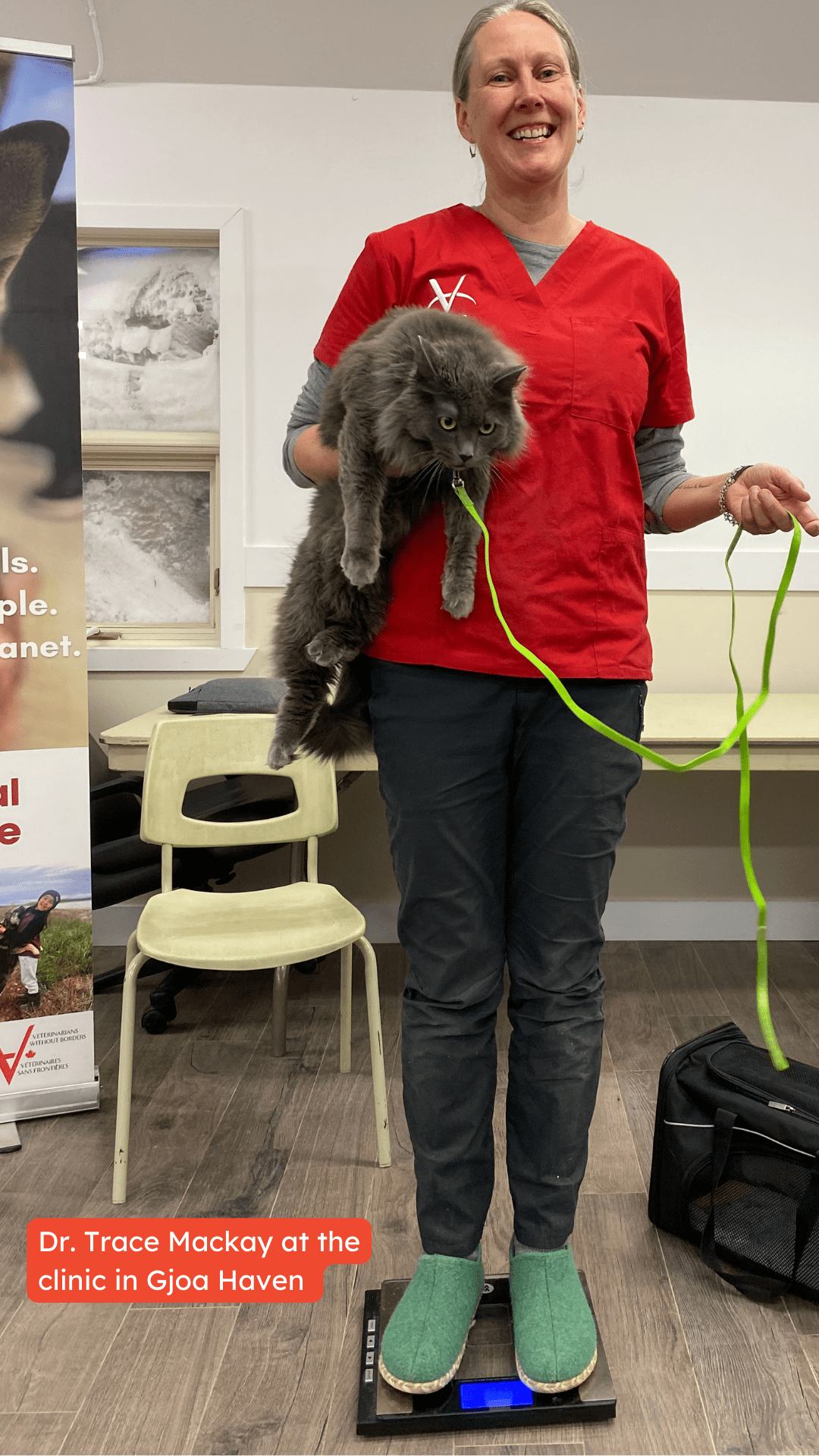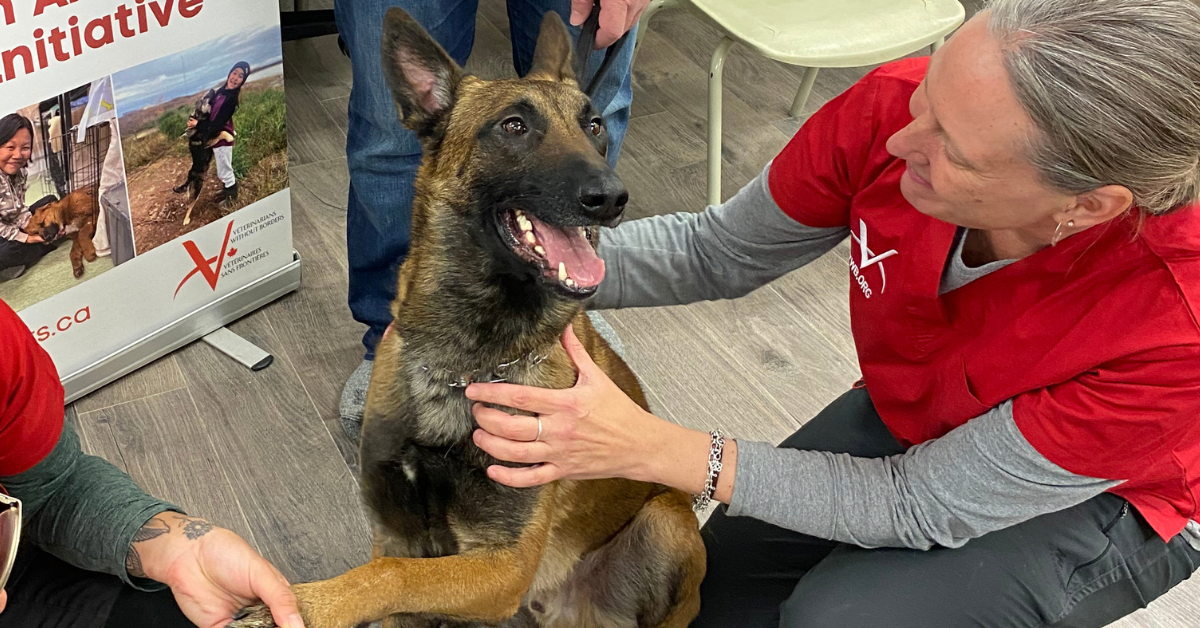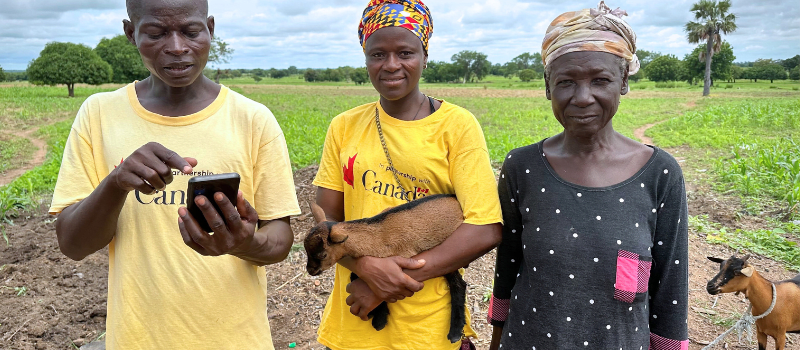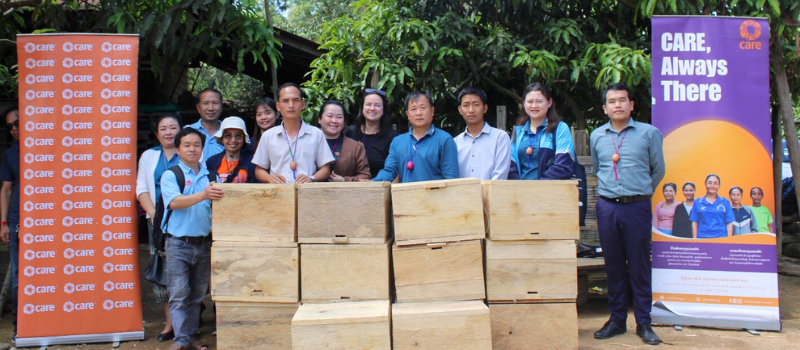At Veterinarians Without Borders North America (VWB), our team members and volunteers are often on the frontlines of building capacity for animal health through trainings and other veterinary services aimed at keeping animals and communities as healthy as possible. Because of this incredible and varied community of voices, VWB has launched 'Ask an Expert' — a blog dedicated to featuring community members and their varying experiences in the animal health space.

Dr. Trace MacKay (DVM, MPH) is a practicing veterinarian based in Lion's Head, Ontario, who is also a former board member with Veterinarians Without Borders (VWB). Holding over 21 years of veterinary experience, Dr. MacKay has volunteered her time with VWB since the formation of VWB Canada in the early 2000s. Her work with VWB has taken her to Africa, Asia, and most recently northern Canada, where she operated as a contract employee with VWB's Northern Animal Health Initiative (NAHI) for a community asset needs assessment and volunteer veterinarian on annual clinics.
In this interview, Dr. MacKay shares her thoughts on how we can continue working together to strengthen access to animal care in the North.

In general, access to any veterinary care; vaccines, deworming, spaying and neutering animals. I think things we sometimes take for granted in the south. I live in a rural community [in Ontario], so even around here there are under-serviced communities, but having no access to veterinary services is a whole other ballgame. Access to resources — animal health knowledge, training, equipment, food, things that help people provide day-to-day care. Tie-outs and collars that won’t snap in the cold temperatures. These are often things that people ask for when we visit communities — especially the collars. There’s also a lot of knowledge in communities held by elders and dog mushers who have generations of relationships with dogs, and they can hold information about training, health, and socialization. At the community level, there needs to be some better infrastructure, maybe animal control officer training, to help control dogs in the community. Or things like heated shelters and pounds that could house dogs until they can get back to their guardians or to new homes. But, I think first and foremost things that are lacking to address animal health needs is to address the people [living in the community]. Because the people are the ones caring for the animals. Take food insecurity for example; if there’s not enough food for families, there’s not enough to feed the dogs. The complexity of what’s needed for animal health needs is almost overwhelming, but there are little steps along the way. I think what VWB is doing, partnering with communities and getting an understanding of what communities can offer and what communities need support in, is a start. I think having veterinary clinics on the ground, even if it’s just once a year at this point, is helping people feel supported in caring for their dogs and getting them what they need to make their communities healthier.
2. Have you encountered any specific health concerns or diseases prevalent among animals in the North, and how do you work to prevent or manage them?
Some of the dogs we often see at clinics get nervous, and they poop on the floor. It happens. In that poop, however, we’re seeing a lot of tapeworms. Even though I couldn’t get tapeworms from just handling that poop, it’s a sign there are tapeworms in the environment, and that life cycle is on the land or in community. If tapeworms are left to go through a life cycle, it could affect the food supply of people and the health of wildlife and dogs. A dog with tapeworm is going to need to eat more to maintain a healthy body weight, which means more resources. On the rabies side, in Taloyoak I heard a lot about dogs needing to be put down because of rabies cases before VWB starting holding clinics there five years ago. They either had clinical signs of rabies or exposure to rabies without vaccines. Since then, even though rabies is a huge threat from the arctic fox, which tends to come close to communities during the fall of each year, the community hasn't had any dogs with clinical signs of rabies or had to send dogs out for rabies testing. So, that’s a drastic change. There’s hope that the more dogs we can vaccinate against rabies each year, that some of the post-exposure treatments may not have to happen, especially to children.
3. What role do cultural considerations play when providing veterinary services in communities in the North?
A huge role. People’s relationships with their dogs and cats in the North cover a whole spectrum — from situations where animals are living in the home, to working dogs on the land, to tied-out dogs that could be hunting companions or security guards. So, there’s a lot of different levels of dog ownership and dog-human relationships to consider. Dogs have always been a very important cultural part of people living in the North; in fact, they were 100% essential for survival. People relied on dogs for transportation, hunting and tracking, and needed dogs for protection. But now, some people see dogs as not having the same use. People have snow machines and quads for hunting and to get around. [But there are still some significant differences between northern and southern pet guardianship]. For example, dogs will alert if there’s a polar bear coming into town. Working with northern dog owners can be very different than working with southern dog owners. But something I’ve seen, is that people are trying to provide dogs with the best care, regardless of where they’re living.
4. In your opinion, how can we ensure continuity of care for animals in communities with limited access to veterinary services?
First and foremost, we can continue on with what VWB is already doing with annual veterinary clinics. Also, we can find ways to build local capacity to help with animal care when veterinarians can’t be there on the ground. I think the bursary, scholarship, and training opportunities that VWB provides in the North are great. It’s getting more youth involved and interested in science, biology, and animal care. Inviting classes of students and young adults to come into the clinics and train as lay vaccinators and explore opportunities in animal health careers is super important. I’m really excited to see how the telehealth program goes in the North. It helps build trust and ensure that people feel supported. Any co-development of animal control programs [is also important]. Things like working with people to help prevent roaming dogs and dog fights and bites can create a safer space and community for everyone. And, what I’m most excited about is co-developing a community animal health worker program in the North. This starts by hearing from communities what resources they’d need to make this happen and how we are going to get in touch with local people. Beyond this, administering vaccines, deworming, and basic first aid… having a presence to allow VWB to share animal health advice with animal guardians, [when they're looking for support].
5. Can you share any memorable experiences or success stories from your work in remote northern communities?
I loved visiting elementary classes in Gjoa Haven. We got to stay in the community and had a whole afternoon dedicated to visiting the classes and teachers. Three of us talked to the kids about their animals, things they think about animals, and things that animals need to feel happy, healthy, and loved. We did some activities to help kids avoid dog bites. One of the things I learned about some of the kids in the classroom is when you ask “yes” or “no” questions, you don’t tend to get a [verbal] "yes"; instead, their eyebrows go up, which is how they give you a positive response. As someone from southern Canada who's still learning about Inuit culture and customs, I would've totally missed the interaction. I thought it was a really cool way to acknowledge a positive response.
6. Based on your experiences volunteering with VWB and as a veterinarian, how do you envision the future of veterinary care in Canada's far North?
It’s going to take time to build local capacity and to have local veterinary professionals that come from [these remote] communities. One of the things I look forward to is government support for communities in the North to achieve things around veterinary services, including local, municipal, hamlet, and federal support. These things are going to take big support from a lot of partners; we need ways to open up windows of opportunity to do this important work.
Learn more about how you can help animals in remote northern communities.





